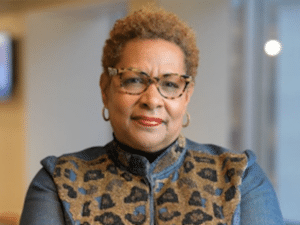Is there room for all of US?
 “The majority of the U.S. population will be people of color by 2050.”
“The majority of the U.S. population will be people of color by 2050.”
By Stephanie Browne, VP of Talent Acquisition and Chief Diversity Officer for Blue Cross Blue Shield of Massachusetts
Did you know that the majority of the U.S. population will be people of color by 2050?
Companies who count the public as the main consumer of their products and services will need to be even more aware of the likes and dislikes of all their customers. They will need to be culturally competent to understand the different cultures that shape their consumers’ opinions on health, foods, travel and community. If everyone in your company has similar backgrounds and experiences, this can’t happen. It’s important to invest and embrace in an employee base that is generationally and racially diverse, and gender-balanced. You must create a culture that fosters curiosity and respect for all ideas, allows for continuous learning and is free of bias that hinders innovation.
Creating a workplace that embraces these attributes is amazingly hard to foster—but incredibly valuable. Throughout American history, we’ve seen competition between men and women, and blacks and whites, as well as bias against people with disabilities, veterans and members of the LGBTQ community. These unhealthy behaviors make creating environments where meritocracy can flourish virtually impossible. These differences can also make personally navigating an average company highly stressful.
In my role as VP of Talent Acquisition and Chief Diversity Officer, I often see the work we do—providing health insurance to millions of individuals across Massachusetts—through the lens of empathy: a theme that is very relevant right now. We seem to have lost the ability to think about what it means to put yourself in your neighbor’s shoes. Heck, we don’t even talk to our neighbors anymore! We believe the rumors we hear about our neighbors before we get to know them ourselves.
To ensure that we are always seeking to understand each other, our organization looks at ways to develop initiatives, programs and events designed for us to check our bias and blind spots and reach into our empathetic senses and filter out stereotypes we may have learned. We train our associates on design thinking and radical collaboration, which happens deliberately and with a purpose. The “ask” is to slow down and hear all the possibilities and understand how what you say or create will impact the intended audience. Empathy is hard work. But those who use it reap infinite rewards.
Sponsored by
 “The majority of the U.S. population will be people of color by 2050.”
“The majority of the U.S. population will be people of color by 2050.”